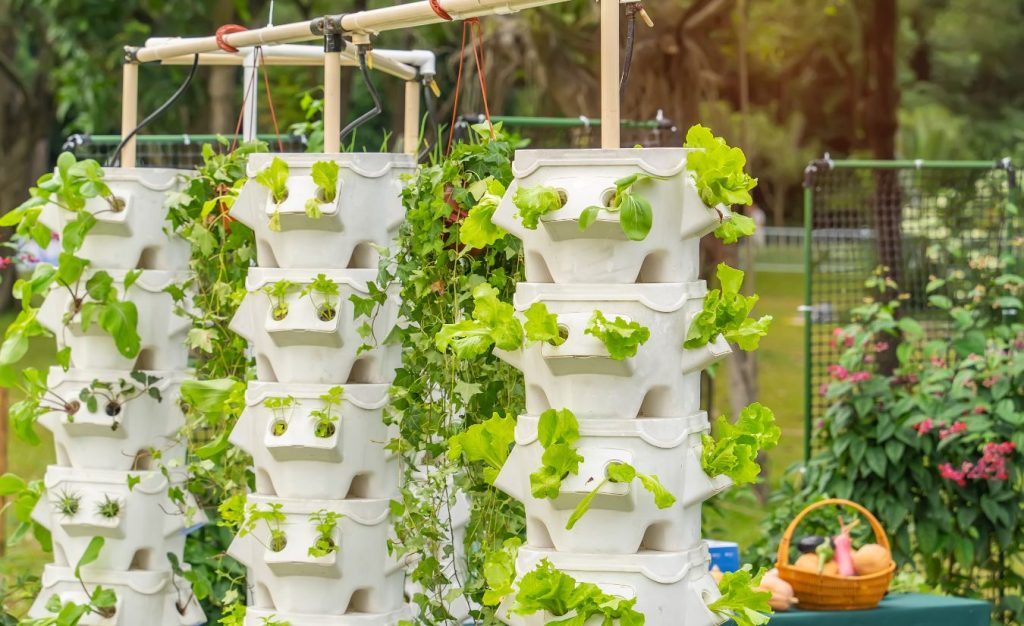Hydroponic systems have revolutionized modern agriculture, offering a soilless method of cultivating plants that maximizes space and resources.
When combined with greenhouse environments, hydroponics allows for year-round production, controlled conditions, and efficient water usage.
Selecting the optimal plants for hydroponic greenhouse cultivation is crucial to achieving high yields and maintaining plant health.
In this quick but thorough guide, I’ll give you a great head start toward building your hydroponic greenhouse gardening inventory with a list of the key plants to consider.
*Don’t miss the bonus section at the end that covers the 8 different methods of hydroponic growing that are ideal for a greenhouse environment. Some of the photos and short descriptions will give hints, but I’ve included 8 explainer videos as well that will really boost your skills!
Leafy Greens: Fast-Growing and High-Yield Choices
Leafy greens thrive hydroponically due to fast growth, shallow roots, low nutrient demands, and adaptability to compact systems, making them efficient, space-saving, and perfect for consistent, high-yield harvests year-round. This category is considered to be the best for beginners.
Lettuce: The Hydroponic Staple
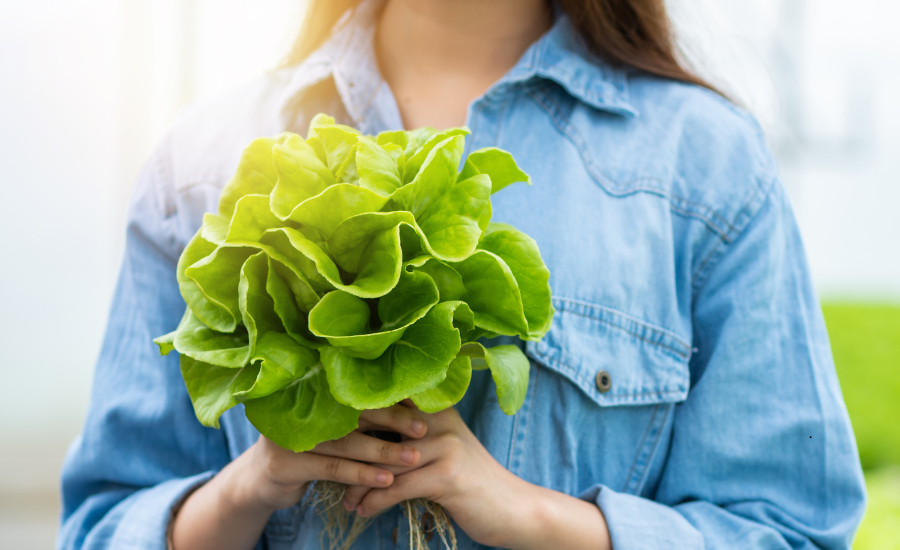
Lettuce is a quintessential crop for hydroponic systems, particularly varieties like Bibb, Romaine, and Butterhead. These types thrive in soilless setups, exhibiting rapid growth cycles that enable continuous harvesting. Maintaining ideal conditions, such as balanced nutrient solutions and appropriate pH levels, ensures optimal growth and crisp texture.
Spinach: Nutrient-Dense and Prolific
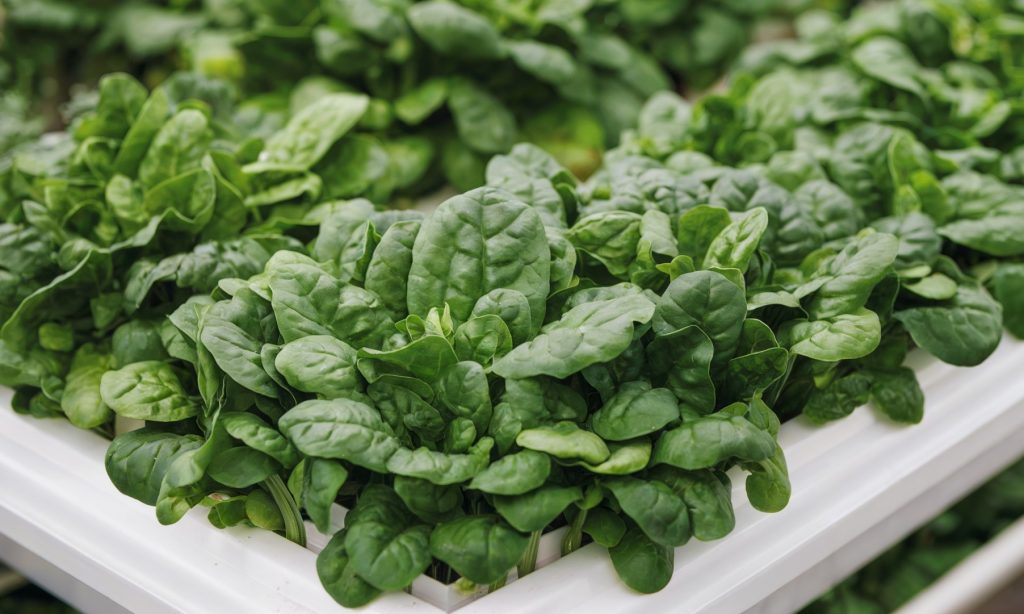
Spinach adapts well to various hydroponic systems, flourishing when cool temperatures are maintained. To prolong production, it’s advisable to harvest leaves regularly, which also encourages bushier growth. This nutrient-rich green is a valuable addition to any hydroponic greenhouse.
Kale: Robust and Resilient Green
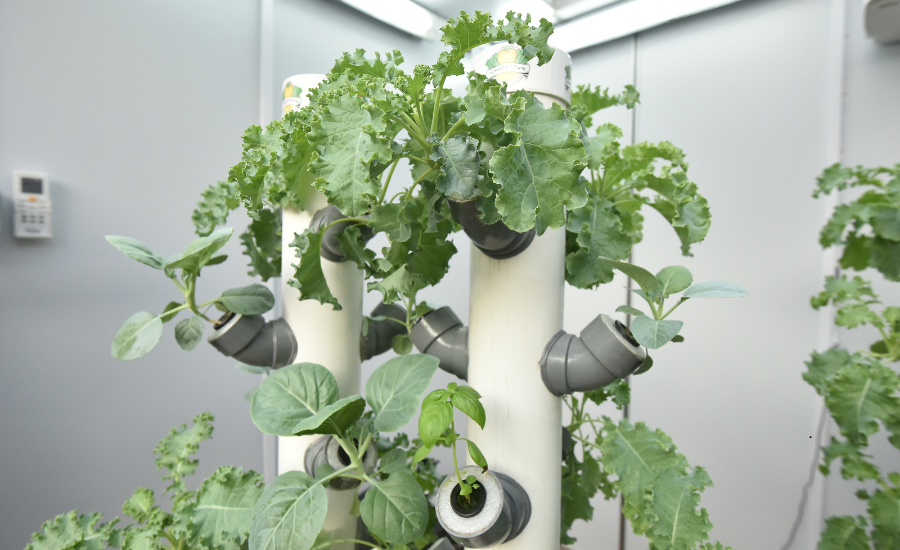
Kale’s hardiness makes it suitable for deep water culture and nutrient film techniques. Managing light exposure is essential to balance flavor and texture, as excessive light can lead to bitterness. Beyond its resilience, kale offers significant health benefits and versatility in culinary applications.
Herbs: Aromatic Additions for Hydroponic Greenhouse Gardening
Herbs thrive hydroponically due to fast growth, minimal space requirements, and consistent access to nutrients. They’re ideal for fresh, flavorful harvests year-round, making them perfect for culinary and medicinal use.
Basil: A Fragrant Favorite
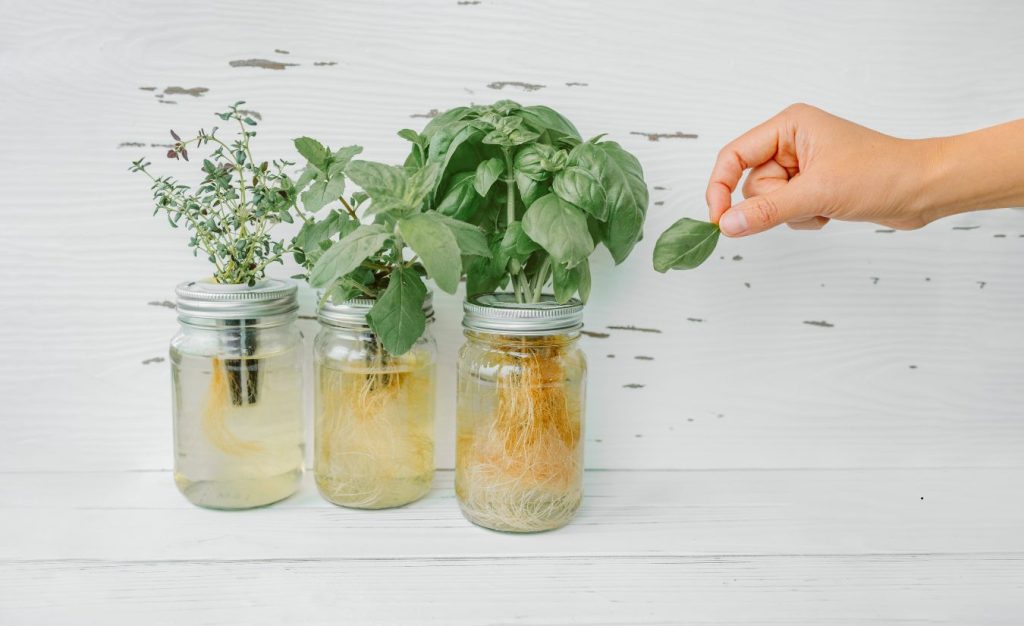
Basil is known for its rapid growth and high market demand, making it another great option to add to the list of backyard business ideas.
Pruning strategies, such as pinching off the tops, encourage bushy development and prevent early flowering.
However, growers should be vigilant against root rot and bolting, common challenges in hydroponic basil cultivation.
Mint: Vigorous and Versatile
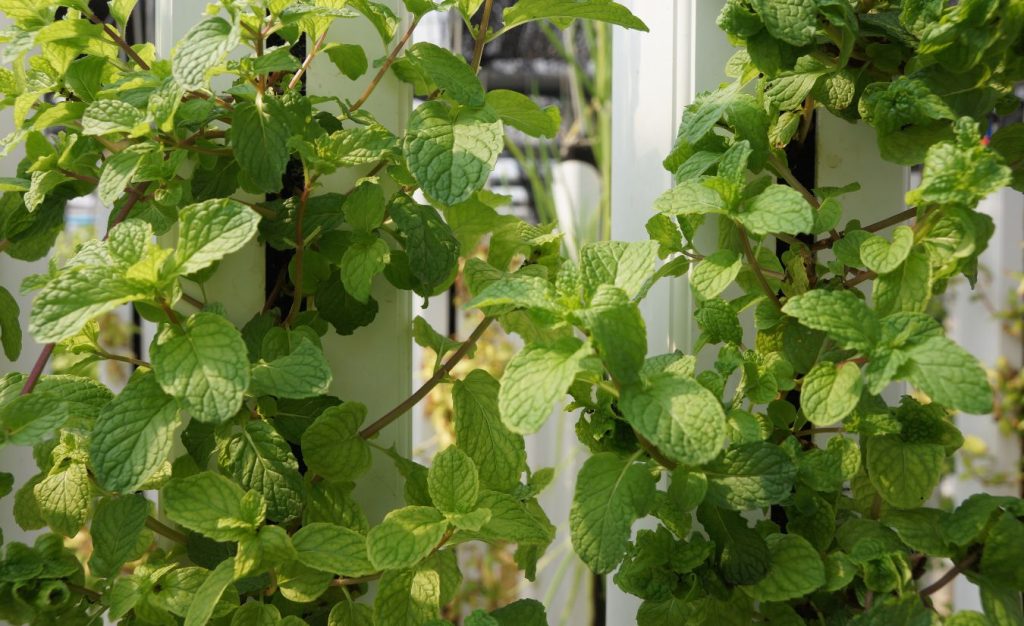
Mint’s aggressive growth requires careful management in confined spaces to prevent it from overtaking other plants. Propagation is typically done through cuttings, as seeds can be unpredictable. Mint’s versatility spans culinary uses and medicinal applications, making it a valuable herb in hydroponic gardens.
Cilantro: Delicate Yet Rewarding
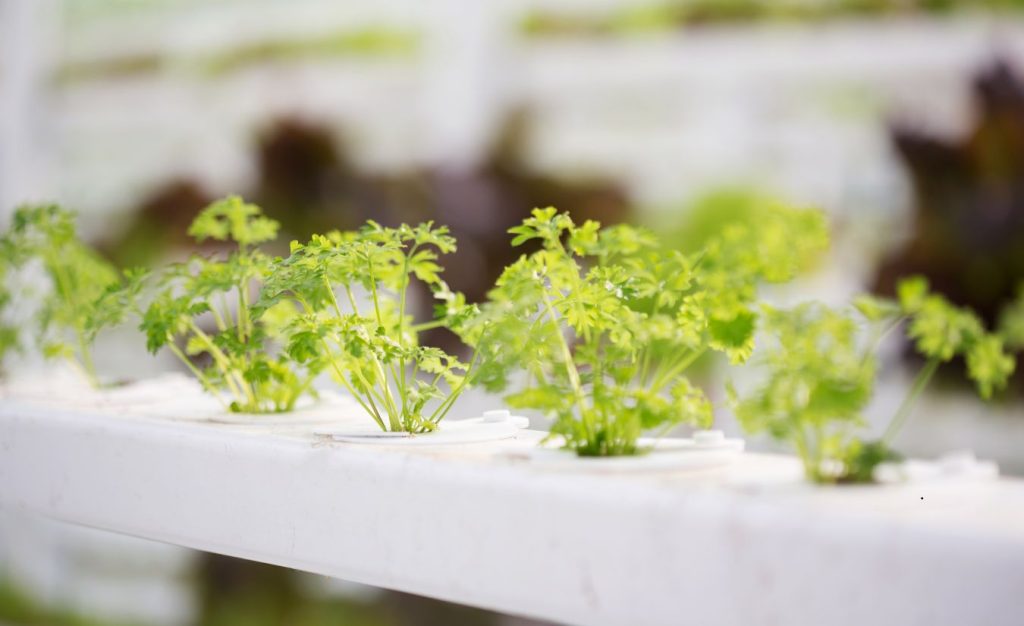
Cilantro has a relatively short lifecycle, necessitating successive planting for continuous yield. Preventing premature flowering, or bolting, is crucial and can be managed by maintaining cooler temperatures. Adequate nutrient supply ensures robust flavor and healthy growth.
Fruiting Plants: Adding Color and Flavor
This is another solid category for beginners, but is generally best suited for those who at least have gone through their leafy greens first.
Fruiting plants thrive hydroponically due to efficient water use, precise nutrient delivery, faster growth, and higher yields.
Tomatoes, peppers, and cucumbers benefit from controlled environments, producing consistent, flavorful harvests year-round.
Tomatoes: A Hydroponic Success Story
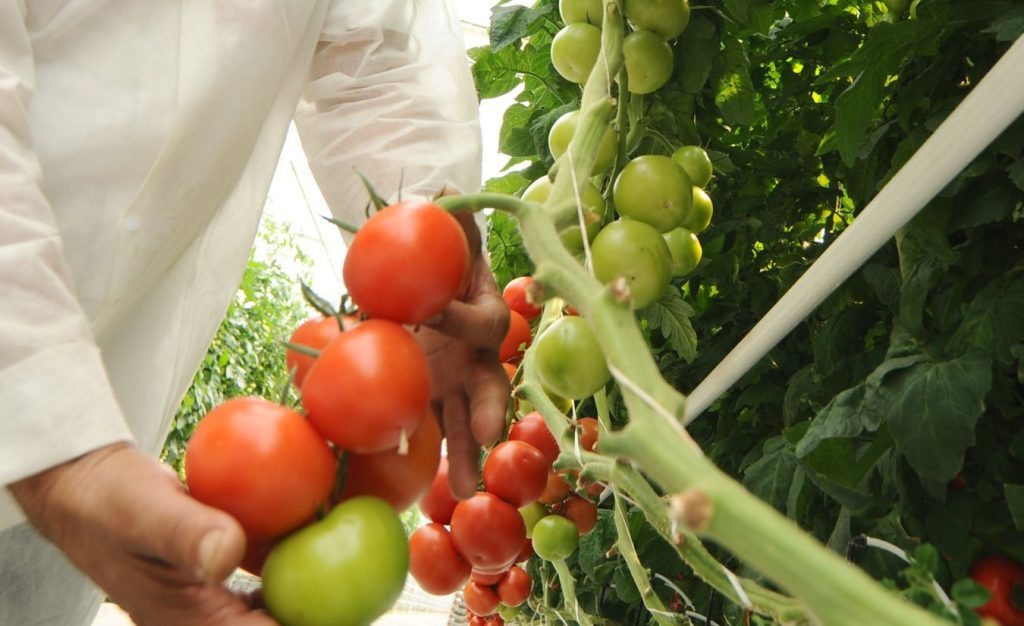
Tomatoes flourish in hydroponic greenhouses, with determinate varieties offering compact growth and indeterminate types providing extended harvests.
In controlled environments, manual pollination techniques, such as gently shaking the plants, may be necessary. Supporting heavy fruit loads through trellising and regular pruning promotes healthy development.
Cucumbers: Crisp and Productive Vines
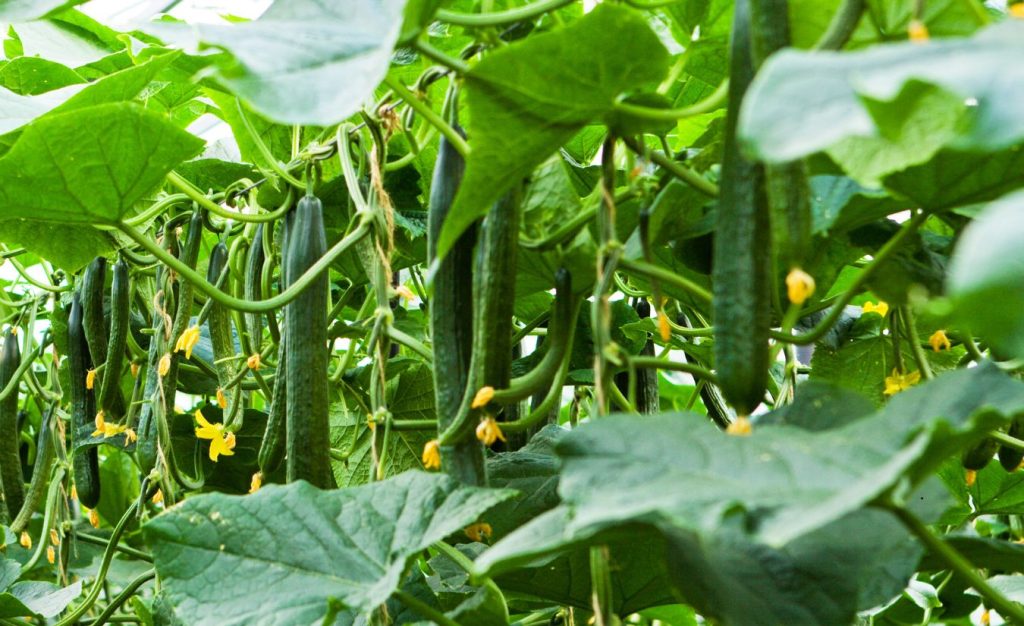
Selecting bush-type cultivars conserves space and suits hydroponic setups. Managing humidity levels is vital to prevent diseases like powdery mildew. Training methods, including vertical trellising, facilitate air circulation and ease of harvest.
Peppers: Sweet and Spicy Options
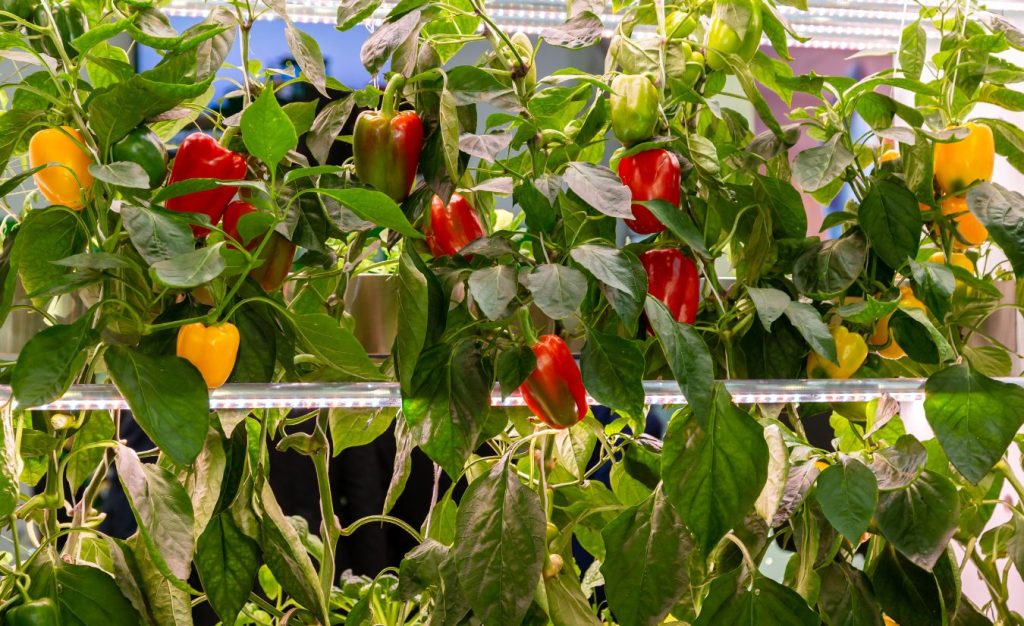
Peppers require specific temperature ranges and ample light for successful fruit set. Nutrient management, particularly adequate potassium and phosphorus, enhances flavor development. Implementing integrated pest management strategies maintains plant health in greenhouse conditions.
Berries: Sweet Treats from Hydroponics
Berries are not without their challenges, but can thrive hydroponically due to their compact size, high yields, fast growth, and suitability for controlled environments.
They require minimal space, adapt well to nutrient delivery systems, and offer consistent quality when tended to with the utmost care.
This is definitely a category that beginners should avoid, but will be incredibly rewarding after acquiring a bit more experience.
Strawberries: Year-Round Delights
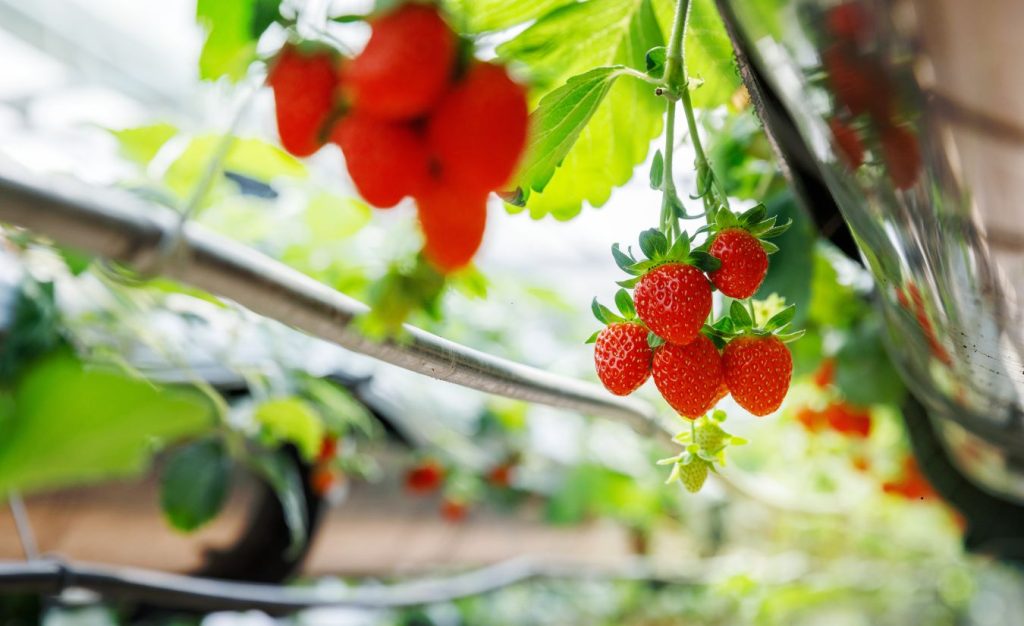
Strawberries adapt well to hydroponic systems, with day-neutral varieties offering continuous production. Utilizing stacking systems maximizes space efficiency. Maintaining cleanliness and monitoring for pests ensures healthy, pesticide-free fruits.
Blueberries: The Sweet Superfood
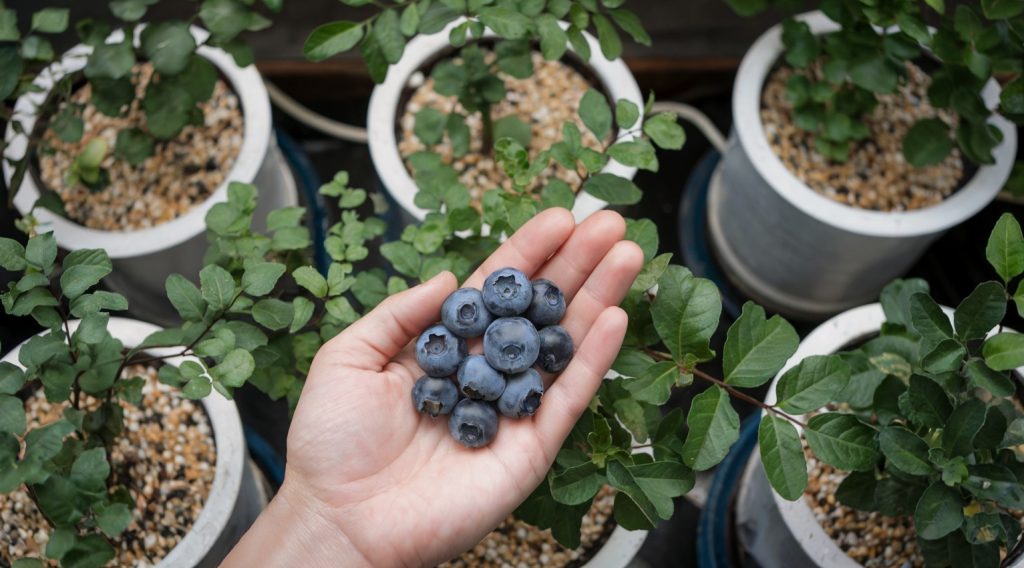
Blueberries can be successfully grown hydroponically, though they require more specific conditions compared to other berries. They thrive in acidic environments, necessitating careful monitoring and adjustment of pH levels in the nutrient solution.
Utilizing a deep water culture with drip system, buckets, or an ebb and flow system can effectively meet their nutrient and water needs. Selecting dwarf or compact varieties, such as ‘Top Hat’ or ‘Sunshine Blue,’ is advisable for managing space within the greenhouse.
Here is a great article from AGQ Labs that offers their specific approach.
Raspberries: Sweet Burst of Flavor and Nutrition
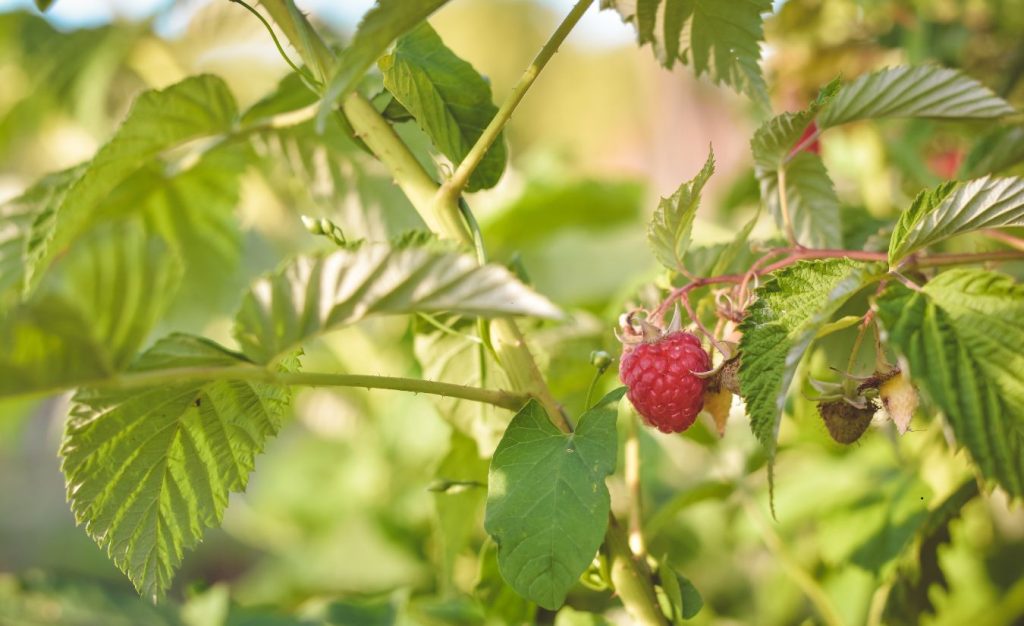
Raspberries are another berry that can be cultivated hydroponically with success. Primocane varieties, which fruit on first-year canes, are particularly well-suited for greenhouse environments, allowing for extended or year-round production.
Implementing a drip irrigation system ensures consistent moisture and nutrient delivery. Providing adequate support structures, such as trellises, helps manage their growth habit and facilitates easier harvesting.
Root Vegetables: Challenges and Considerations
Despite being the most challenging option for hydroponics, root vegetables can still be grown hydroponically with systems like deep-water culture (DWC) or ebb and flow combined with a loose, non-soil medium such as coco coir or perlite to support root formation. Proper system design and management are key to overcoming these obstacles.
Radishes: Quick Turnaround Crops
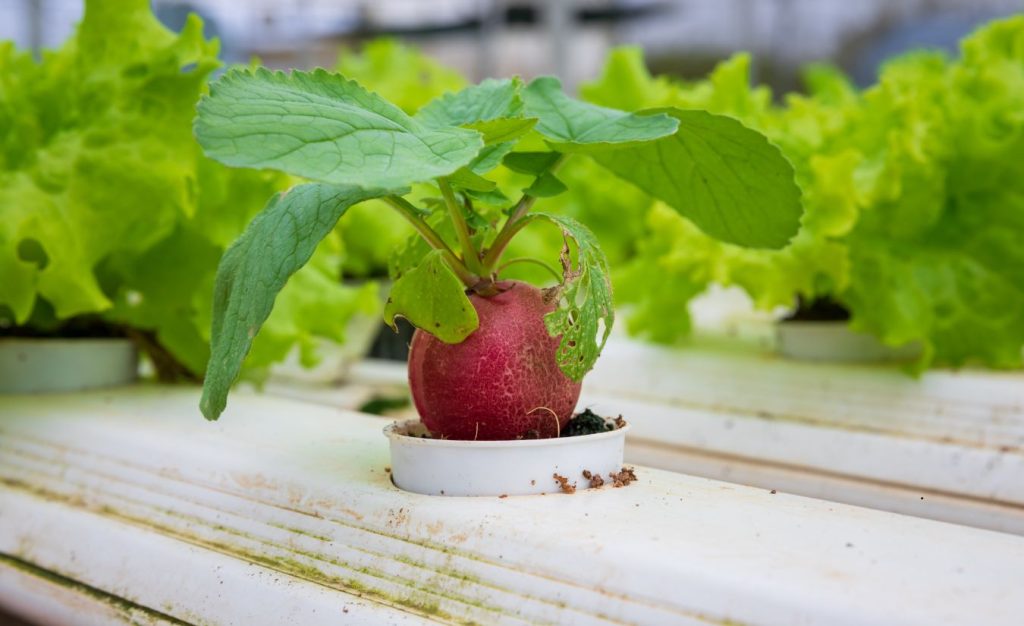
Radishes are suitable for hydroponics due to their rapid growth and minimal space requirements. Shallow systems accommodate their small root development. Monitoring nutrient concentrations prevents issues like splitting, and successive planting ensures a steady supply.
Beets: A Vibrant and Nutritious Addition
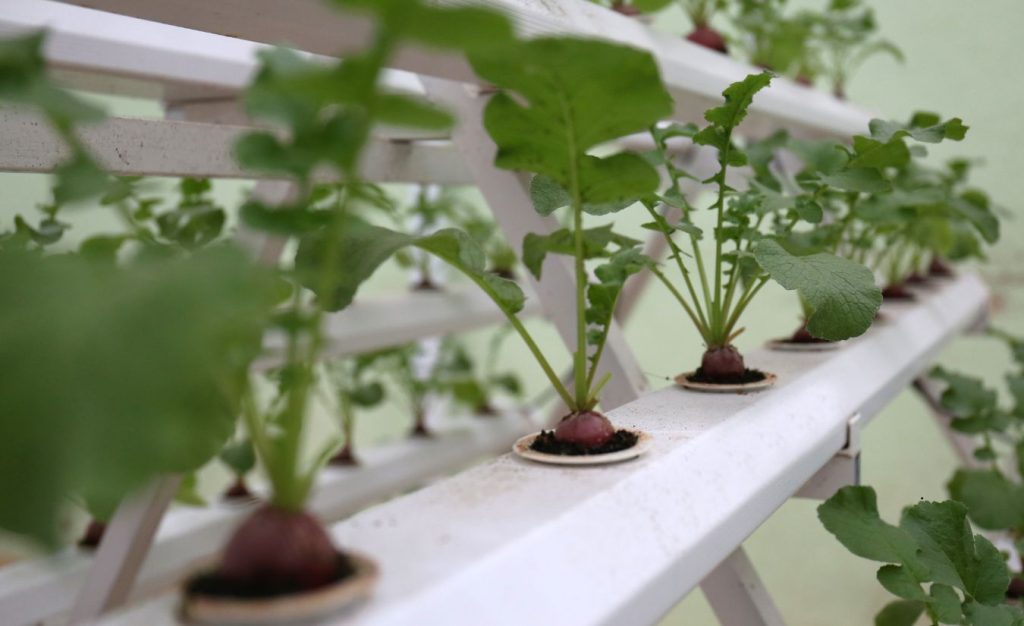
Beets adapt well to hydroponic systems, provided they have sufficient space for root expansion. Both the root and the greens are edible, offering dual benefits that we covered when advising our readers of the best survival garden crops to grow.
Maintaining a slightly acidic pH of 6.0 to 6.5 and ensuring a nutrient solution rich in phosphorus supports healthy root development.
Carrots: Crunchy and Colorful
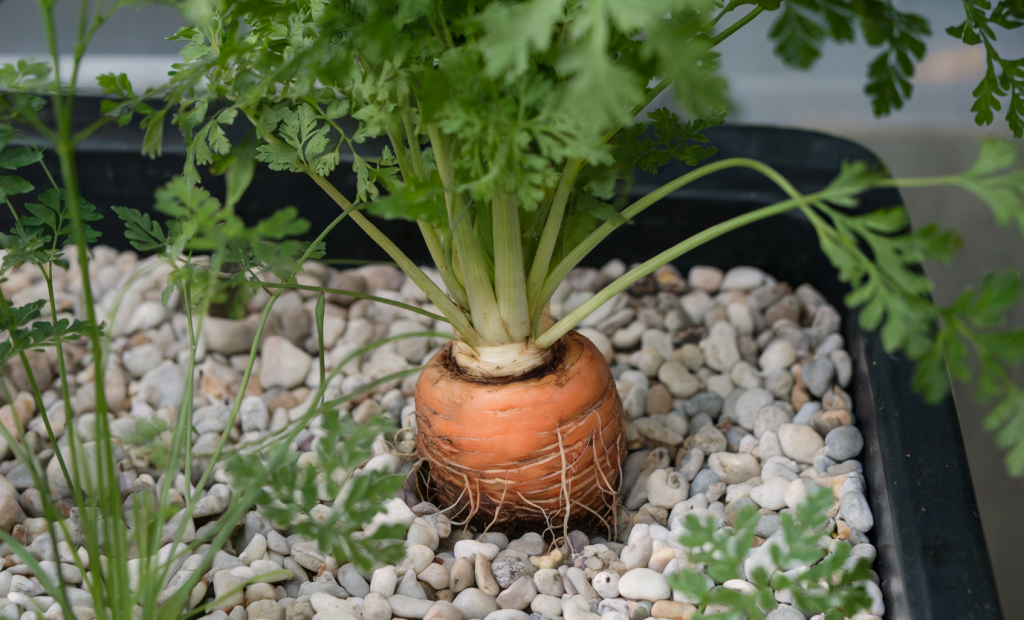
While more challenging, carrots can be successfully grown hydroponically with the right setup. Utilizing a deep water culture system with a suitable growing medium allows for proper root formation.
Consistent monitoring of nutrient levels and pH is essential to prevent abnormalities and promote uniform growth. Check out this successful experiment with carrots and onions documented on Reddit!
Methods of Hydroponic Greenhouse Gardening
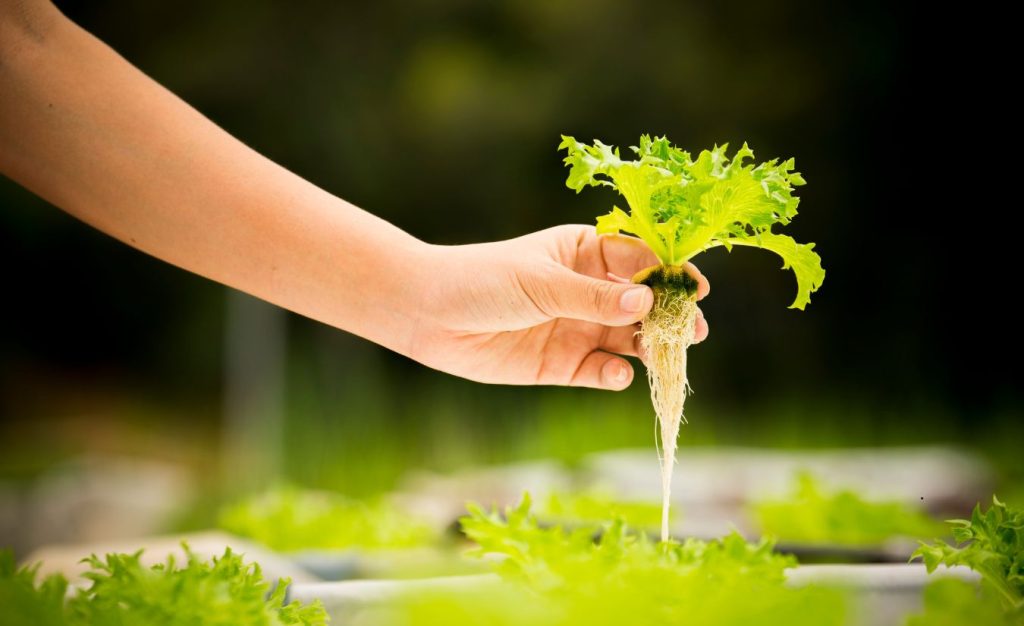
Growing vegetables, herbs and fruit hydroponically in a greenhouse involves various techniques that maximize space, conserve water, and encourage healthy growth. Here are the 8 main methods:
1. Nutrient Film Technique (NFT):
- How It Works: A thin film of nutrient-rich water flows through shallow channels where plant roots are exposed.
- Best For: Leafy greens like lettuce, spinach, and herbs like basil and mint.
- Advantages: Minimal water usage, easy to monitor and adjust nutrients.
2. Deep Water Culture (DWC):
- How It Works: Plants are suspended with their roots submerged in oxygenated, nutrient-rich water.
- Best For: Fast-growing crops like lettuce, kale, and certain herbs.
- Advantages: Simple setup, continuous nutrient access for plants.
Check out this DIY!
3. Drip Irrigation System:
- How It Works: Nutrient solution is delivered directly to the base of each plant via drip emitters.
- Best For: Fruit-bearing plants like tomatoes, peppers, and cucumbers.
- Advantages: Precise nutrient and water delivery, scalable for various plant types.
Another great setup that is mostly DIY.
4. Ebb and Flow (Flood and Drain):
- How It Works: A tray holding plants is periodically flooded with nutrient solution, which then drains back into a reservoir.
- Best For: Herbs, lettuce, strawberries, and certain vegetables.
- Advantages: Promotes even nutrient distribution and oxygenation.
5. Aeroponics – Tower Garden:
- How It Works: Plant roots are suspended in air and misted with a nutrient solution.
- Best For: High-value herbs like thyme and cilantro, as well as leafy greens.
- Advantages: Maximizes oxygenation, uses minimal water.
6. Wick System:
- How It Works: A wick draws nutrients from a reservoir to the plant roots.
- Best For: Small, non-demanding plants like herbs (e.g., chives, parsley).
- Advantages: Low-tech, no need for pumps or electricity.
7. Vertical Hydroponics:
- How It Works: Plants are grown in vertically stacked systems with nutrient solution delivered through pipes or channels.
- Best For: Space-saving production of leafy greens and herbs.
- Advantages: Efficient use of greenhouse space, high yield potential.
8. Kratky Method:
- How It Works: Plants are suspended above a nutrient solution, with roots partially submerged and air exposure for oxygen.
- Best For: Simple crops like lettuce and leafy herbs.
- Advantages: Passive system with no need for pumps or electricity.
Key Considerations:
- Lighting: Supplementary lighting ensures optimal growth in low-light conditions.
- Temperature & Humidity Control: Essential for maintaining a stable growing environment.
- Water Quality: Must be free of contaminants and adjusted for pH and nutrients.
- Pest Management: A controlled greenhouse reduces pest risks but requires monitoring.
These methods can be used individually or combined to optimize greenhouse productivity and meet the specific needs of the crops grown.
Cultivating Success in Hydroponic Greenhouse Gardening
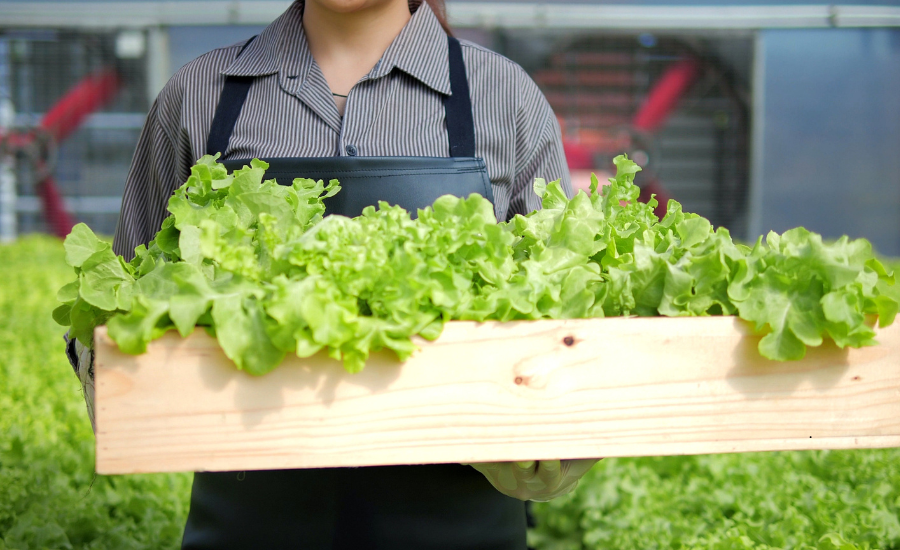
Selecting appropriate plants is fundamental to the success of hydroponic greenhouse gardening. Leafy greens, herbs, and certain fruiting plants offer promising results.
By experimenting with diverse crops, the many different methods, and adhering to best practices, growers can optimize yields and enjoy the myriad benefits of this innovative cultivation method.
See Our Latest Posts
- Simple Recipes for DIY Herbal Salves and Balms
- Delicious One-Pot Homestead Meals from Pantry Staples
- 5 Best Meat Dehydrators for DIY Jerky on Amazon (2025)
- Urban Homestead Hacks from Backyard to Balcony
- Creative Strategies for Frugal Homesteading
Write A Guest Post For Us!
Are you passionate about gardening, raising livestock or preserving food? We’re excited to announce that we’re now accepting guest posts for all aspects of homesteading!

